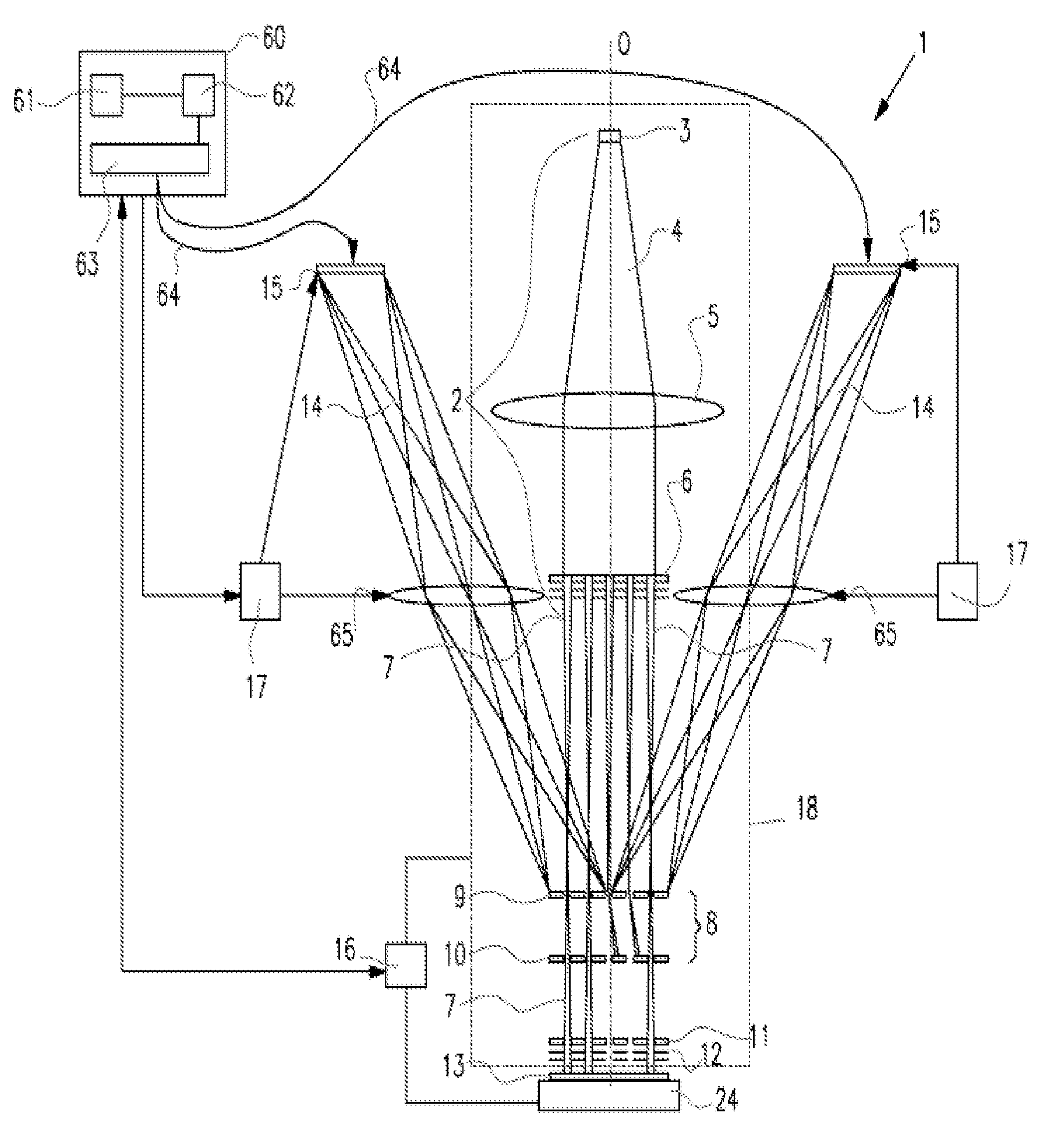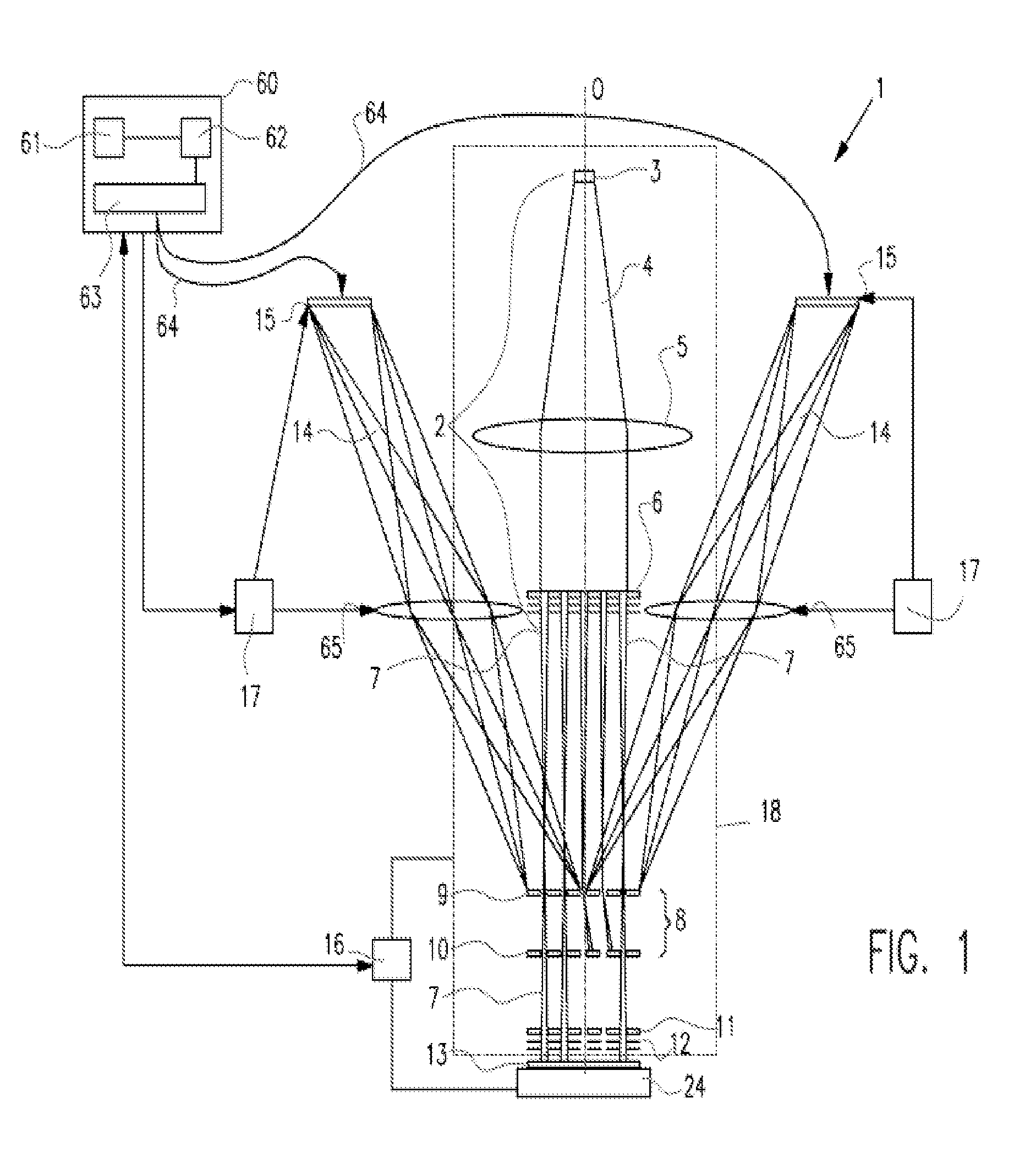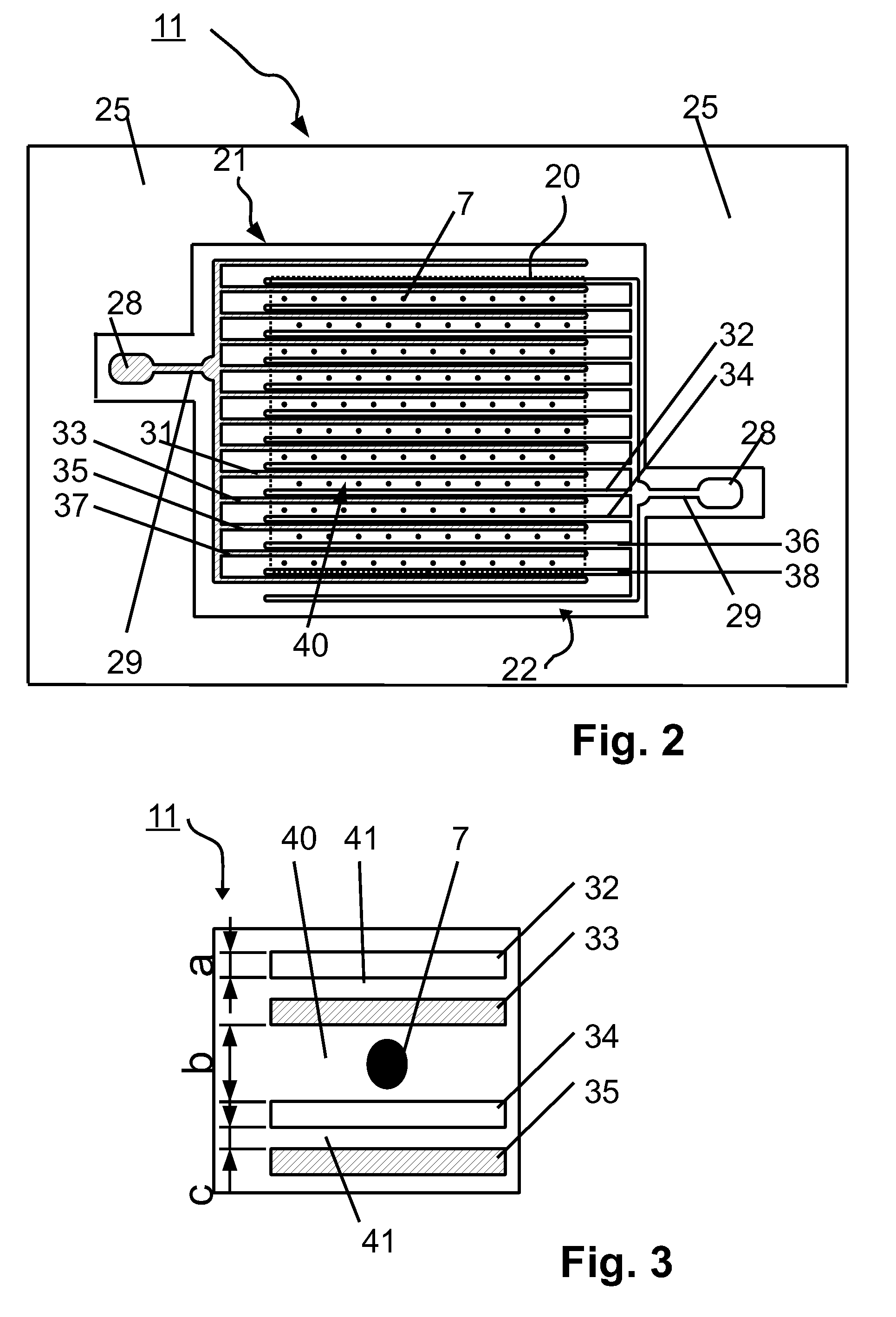Charged particle optical system comprising an electrostatic deflector
an optical system and charge technology, applied in the direction of instruments, mass spectrometers, beam deviation/focusing by electric/magnetic means, etc., can solve the problems of disadvantages, x and y deflections must be applied sequentially at different angles, and complex construction of deflections, so as to improve the uniformity of scanning, accurately scan a pattern with sufficient speed, and reduce positioning time
- Summary
- Abstract
- Description
- Claims
- Application Information
AI Technical Summary
Benefits of technology
Problems solved by technology
Method used
Image
Examples
second embodiment
[0083]FIG. 6 shows a top view of a second embodiment according to the invention. This embodiment shows an interdigitated pair of electrodes 21, 22. Edge zones 23 are present located at opposite edges of the deflector 11. The edge zones 23 comprise a set of parallel oriented strips of the first and the second electrode 21, 22. Nonetheless, no passing windows 40 have been designed within the edge zones 23. Suitably, the design of the strips is equal to the design in the main portion of the deflector 9, but that is not necessary. Although shown to be equal, the edge zones 23 might well be implemented in different designs.
[0084]Additionally to the edge zones 23 in a direction parallel to the electric field, it is advantageous to create edge zones 26 in a direction normal to the electric field, i.e. near the distal ends of the freestanding portion of electrodes or strips. Such edge zones 26 support to prevent artifacts in the electric field as a consequence of interactions with the subst...
third embodiment
[0087]FIG. 7 shows a third embodiment according to the invention. In this embodiment, the electrode system comprises several portions 91-94. In this example, the number is four, but that is not necessary or limiting. The number might be larger (for instance 9 or 16), it could be smaller (2). The electrode system may be subdivided into a series of portions adjacent to each other, instead of a plurality of blocks. Each of the portions comprises consecutive strips of electrodes 21, 22 that overlie an aperture 51a-d in the substrate 50. In this embodiment, there are four apertures 51a-d corresponding to the four portions 91-94. However, this is not strictly necessary; an additional layer could act as a carrier for the electrode system of all strips. This additional layer would be provided with apertures 51a-d, while still overlying the aperture 51 in the substrate 50. The apertures 51a-d do not need to have a cubic cross-section, e.g. lateral extension may be larger than width or vice v...
PUM
 Login to View More
Login to View More Abstract
Description
Claims
Application Information
 Login to View More
Login to View More - R&D
- Intellectual Property
- Life Sciences
- Materials
- Tech Scout
- Unparalleled Data Quality
- Higher Quality Content
- 60% Fewer Hallucinations
Browse by: Latest US Patents, China's latest patents, Technical Efficacy Thesaurus, Application Domain, Technology Topic, Popular Technical Reports.
© 2025 PatSnap. All rights reserved.Legal|Privacy policy|Modern Slavery Act Transparency Statement|Sitemap|About US| Contact US: help@patsnap.com



